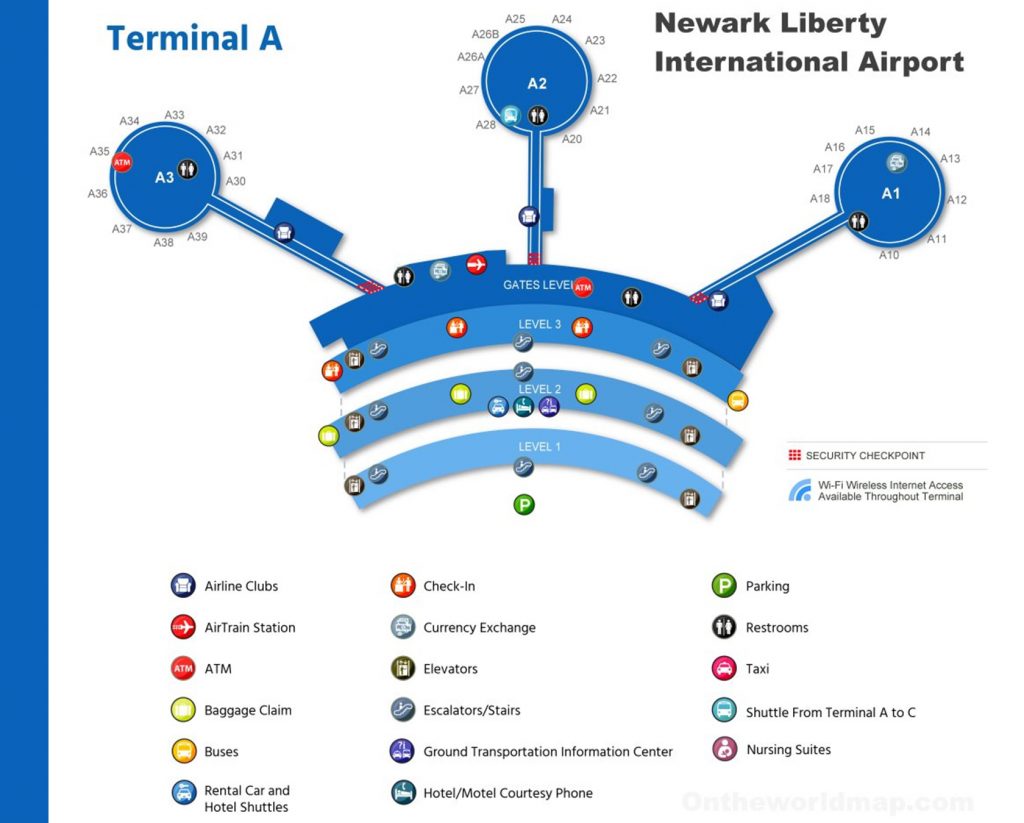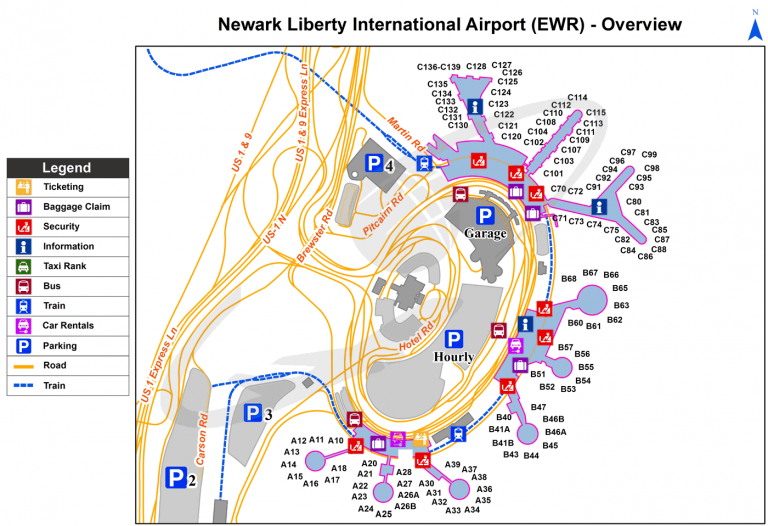Ever wondered why airport codes like EWR, representing Newark Liberty International Airport, seem so arbitrary? The seemingly random nature of these three-letter designations actually stems from a structured system with historical roots and logistical considerations, all designed to ensure efficient global air travel.
The International Air Transport Association (IATA) meticulously assigns these codes to airports worldwide. These codes serve as essential identifiers for airlines, air traffic controllers, and travelers, ensuring clarity and accuracy in flight operations. Newark Liberty International Airport, a major gateway serving the New York metropolitan area, is a prime example of this system in action.
The airport, formally known as Newark Liberty International Airport, is located in both Newark, in Essex County, and Elizabeth, in Union County, New Jersey, straddling the boundary between the two cities. Despite its location in Newark, the airport is identified by the code EWR. This contrasts with the expected "NKE" that one might anticipate, given its primary city affiliation. Newark Liberty International Airport (IATA: EWR, FAA LID: KEWR) operates as a significant international airport, servicing the New York metropolitan area.
- Billie Eilishs Age More Your Guide To The Artists Life
- Explore Vice Presidential Debate Bingo More 2024
This apparent anomaly is rooted in the evolution of airport codes, which have adapted to the increasing demands of air travel over the decades. These codes also facilitate the smooth flow of information across the global aviation network. Its strategic location, approximately 15 miles (24 km) southwest of midtown Manhattan and 60 miles (97 km) northeast of Philadelphia, has contributed to its role as a key travel hub. The airport's origins trace back to its establishment in 1928, and since then it has grown to become one of the worlds busiest airports.
The airport serves not only as a crucial point of arrival and departure for the New York metropolitan area but also as a significant connecting point for global travel. Airlines like United Airlines and JetBlue utilize EWR as a major hub, offering a wide range of domestic and international flights.
The airport's code, "EWR," is derived from its earlier name, Newark Metropolitan Airport, which was subsequently updated to Newark International Airport. This historical connection highlights how airport codes can reflect changes in an airport's name and identity over time.
- Dive Into 86 A Deep Dive Into The Anime Light Novel Series
- Justin Bieber Aesthetic Evolution From Youtube Kid To Icon
Here's a breakdown of key aspects related to Newark Liberty International Airport:
| Aspect | Details |
|---|---|
| IATA Code | EWR |
| ICAO Code | KEWR |
| FAA LID | EWR |
| Location | Newark and Elizabeth, New Jersey, USA |
| Serving | New York Metropolitan Area |
| Distance to Midtown Manhattan | Approximately 15 miles (24 km) |
| Distance to Philadelphia | Approximately 60 miles (97 km) |
| Zip Code | 07114 |
| Established | October 1, 1928 |
| Main Airlines | United Airlines, JetBlue |
| Busiest Status | One of the busiest airports in the United States |
For reference, you can find more information on FlyerTalk.
The assignment of airport codes isn't always intuitive. The case of Dubai International Airport provides another intriguing example. When this airport opened in 1960, the code "DUB" was already in use by Dublin. To avoid confusion, Dubai adopted an "X" in place of the "U," resulting in the distinctive airport code "DXB." This illustrates the adaptive nature of the IATA system in managing the increasing number of airports worldwide.
Before the adoption of three-letter codes, a two-letter system prevailed. It is interesting to note that when this transition happened, the U.S. Navy reserved all codes beginning with the letter "N".
The coach USA Newark Airport Express bus service runs between Midtown Manhattan and all EWR terminals, which further illustrates the airport's importance to regional transportation and tourism.
EWR serves as a critical transportation hub, especially for international travel, serving the New York metropolitan area. It is located approximately 9 miles west of Manhattan and is consistently ranked among the busiest airports in the United States.
EWR, with its IATA, ICAO, and FAA LID designations, functions as a main airport for the New York metropolitan area. It facilitates global connectivity by offering both international and domestic flights. The airport, situated in an elevated area approximately 18 feet/5 meters above sea level at 40 41 33 N, 74 10 7 W, efficiently connects travelers to a wide array of global destinations.
In 2017, Newark Airport was the 60th busiest airport in the United States based on international passenger traffic, confirming its importance within the global aviation network. With a remarkable service of 29 million passengers in 2021, EWR shows its significance as one of the worlds busiest airports.
In conclusion, the seemingly cryptic nature of airport codes like EWR conceals a well-structured system. It facilitates global air travel, accommodating the growth and complexity of the aviation industry. EWR's history and operational significance show its role in the New York metropolitan area's transportation landscape.

![Newark Liberty International Airport [EWR] Terminal Guide [2022]](https://upgradedpoints.com/wp-content/uploads/2019/07/Newark-Liberty-International-Airport-Terminal-C-708x416@2x.jpg)

Detail Author:
- Name : Daryl Lang
- Username : adam42
- Email : armstrong.jessie@hotmail.com
- Birthdate : 1979-05-10
- Address : 50197 Marcelle Center Apt. 628 McCulloughchester, HI 29156-3126
- Phone : (240) 836-9780
- Company : Langworth-Murray
- Job : Baker
- Bio : Voluptas ut ut voluptas et modi. Est ut ab est ratione qui nemo. Et est eos consequatur consequatur est pariatur.
Socials
tiktok:
- url : https://tiktok.com/@emiliabernier
- username : emiliabernier
- bio : Incidunt aut quisquam in qui dignissimos vel.
- followers : 2229
- following : 2964
twitter:
- url : https://twitter.com/berniere
- username : berniere
- bio : Quos ipsam facilis iure neque rerum dolores omnis excepturi. Amet ex perferendis et qui ducimus. Repudiandae dicta a ut illo laboriosam qui est veritatis.
- followers : 237
- following : 2940